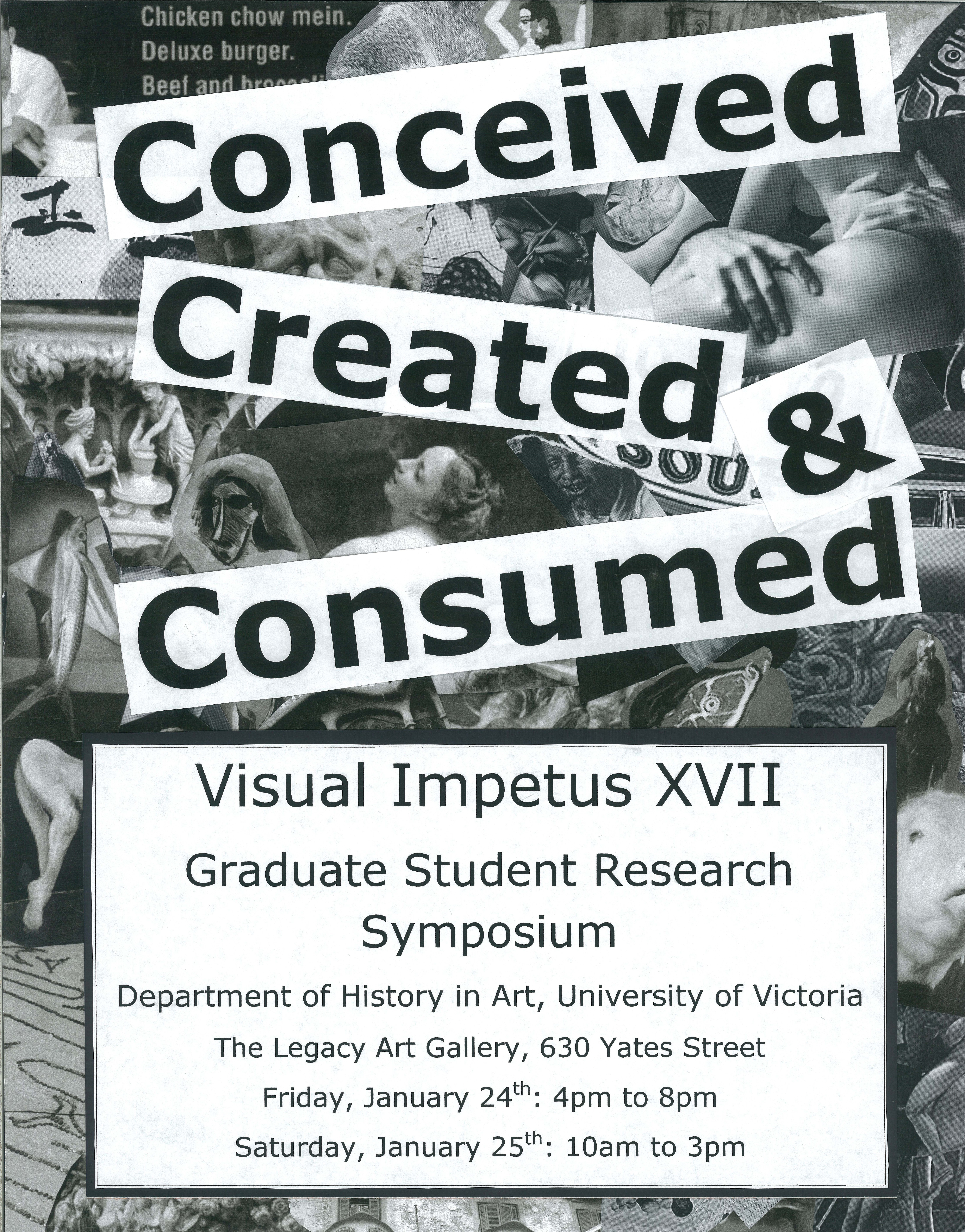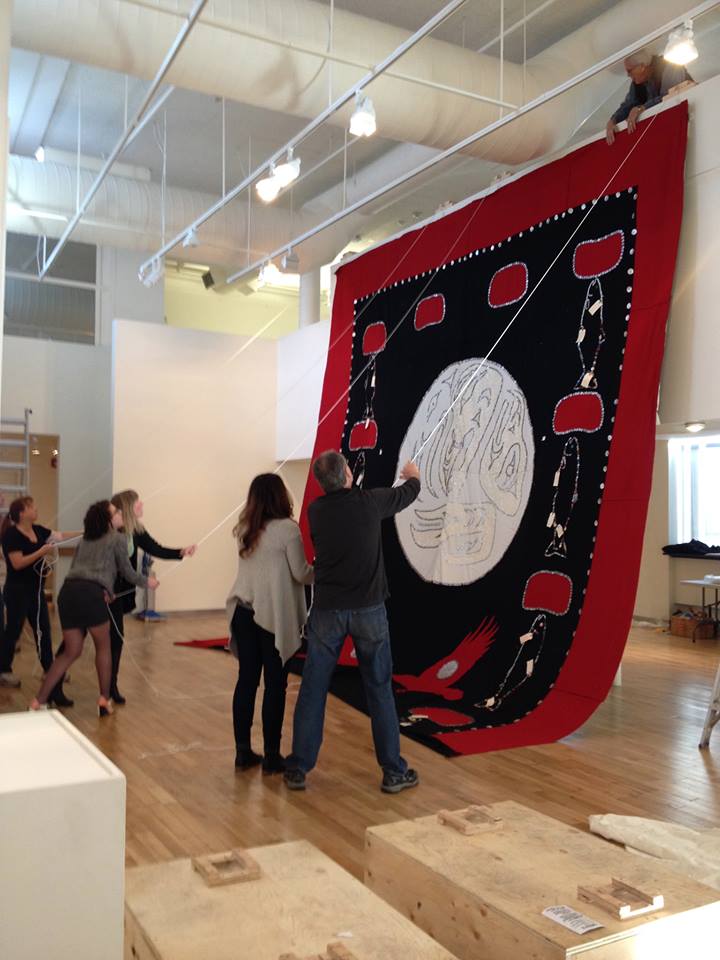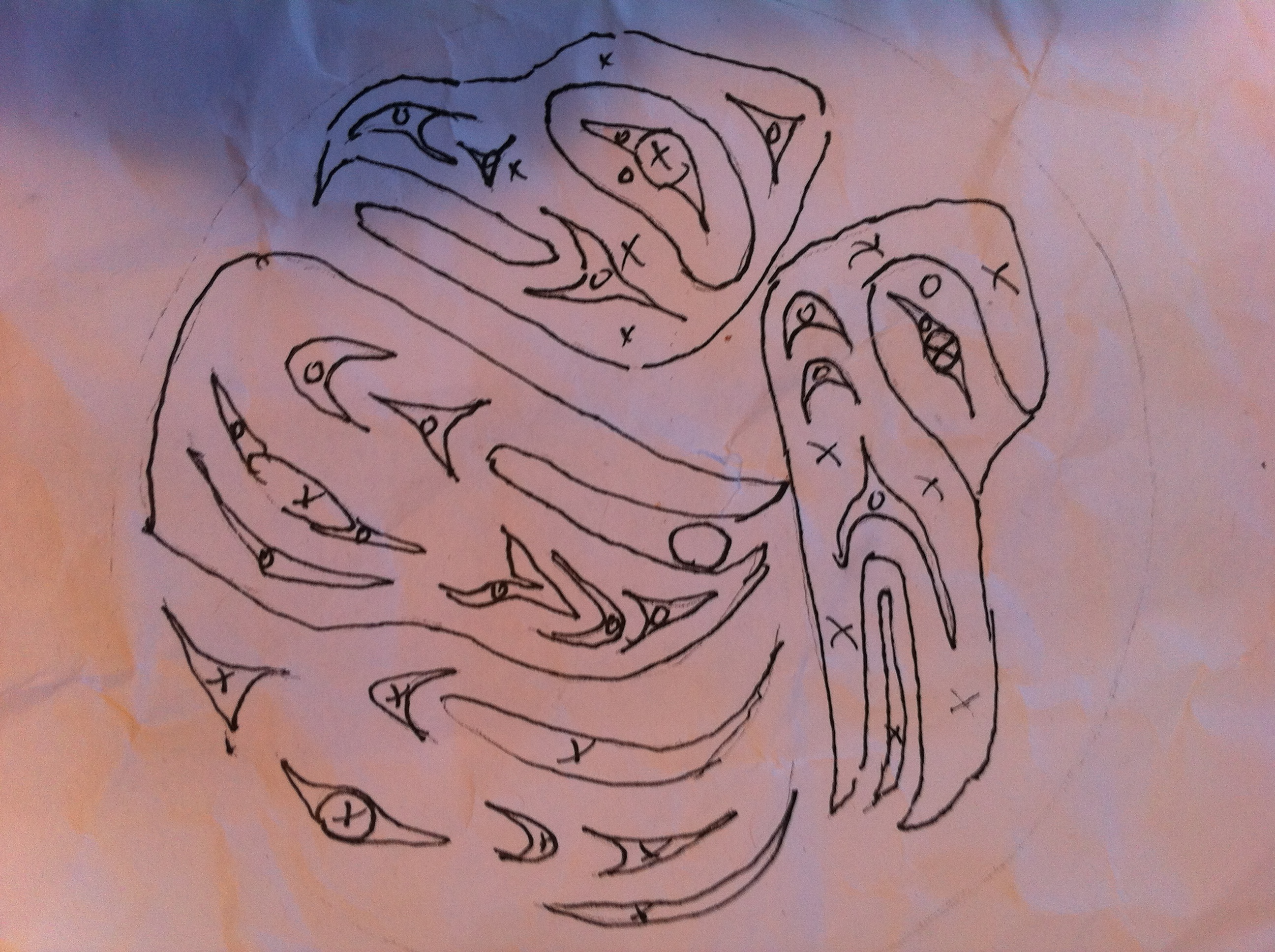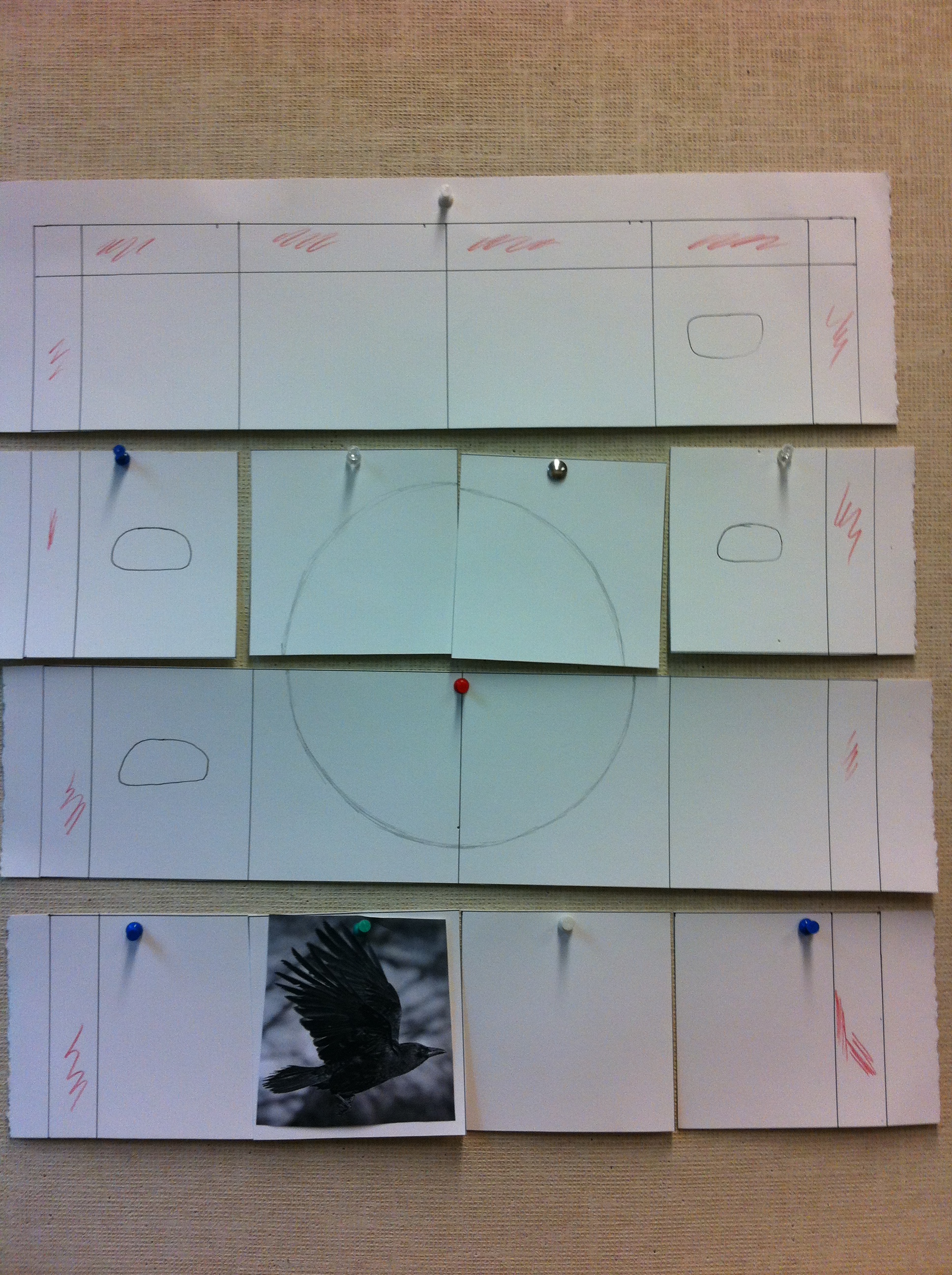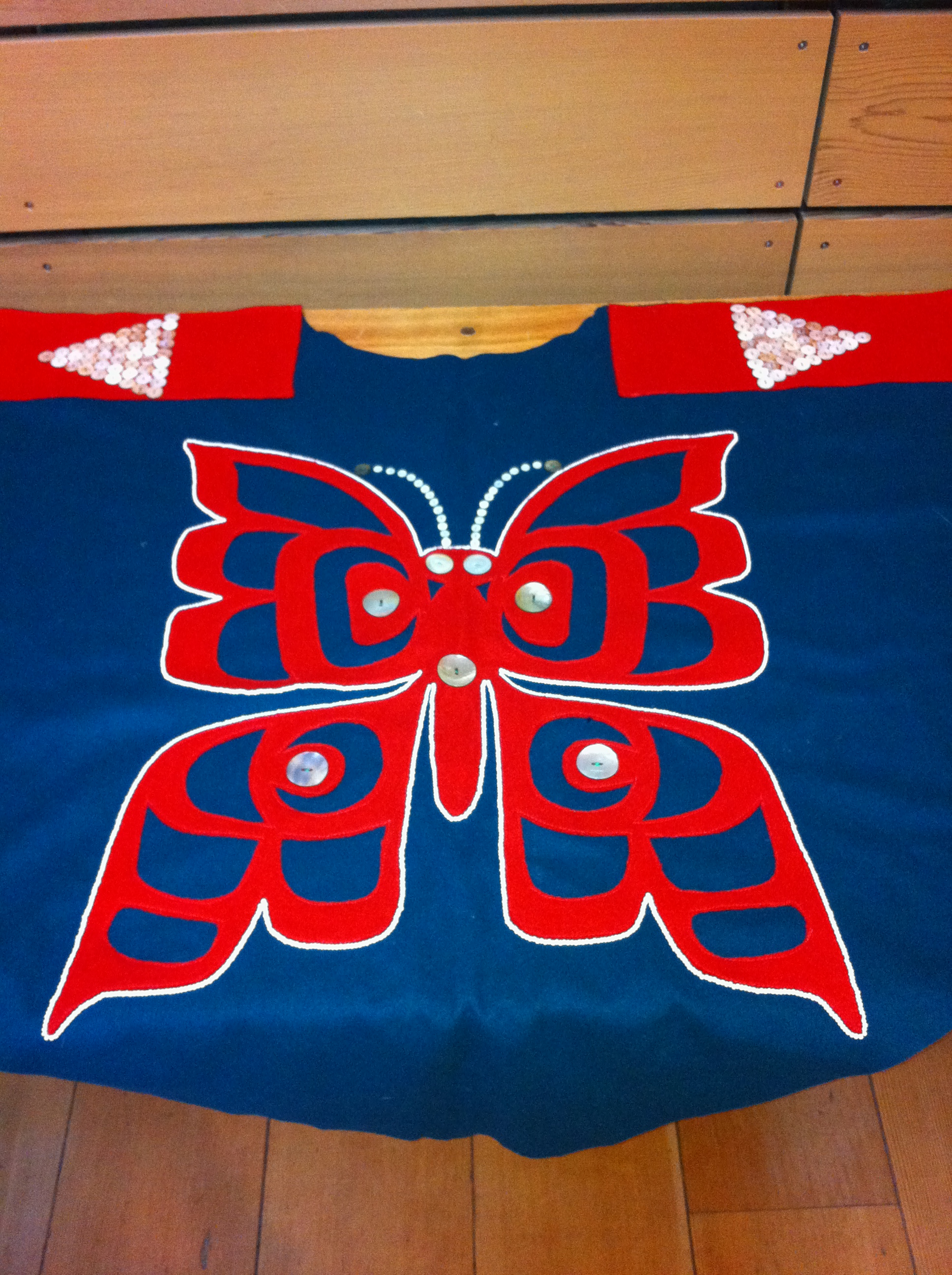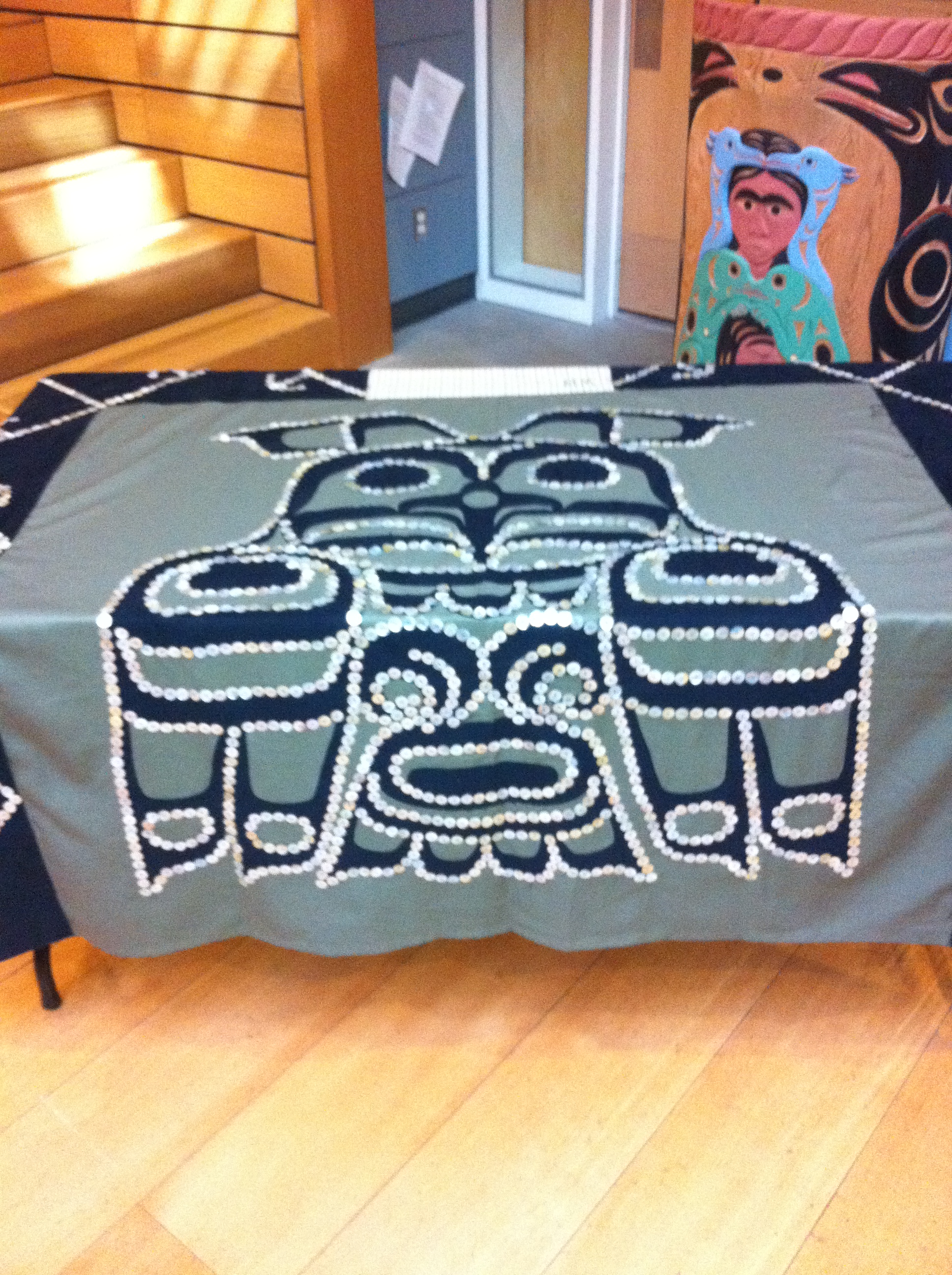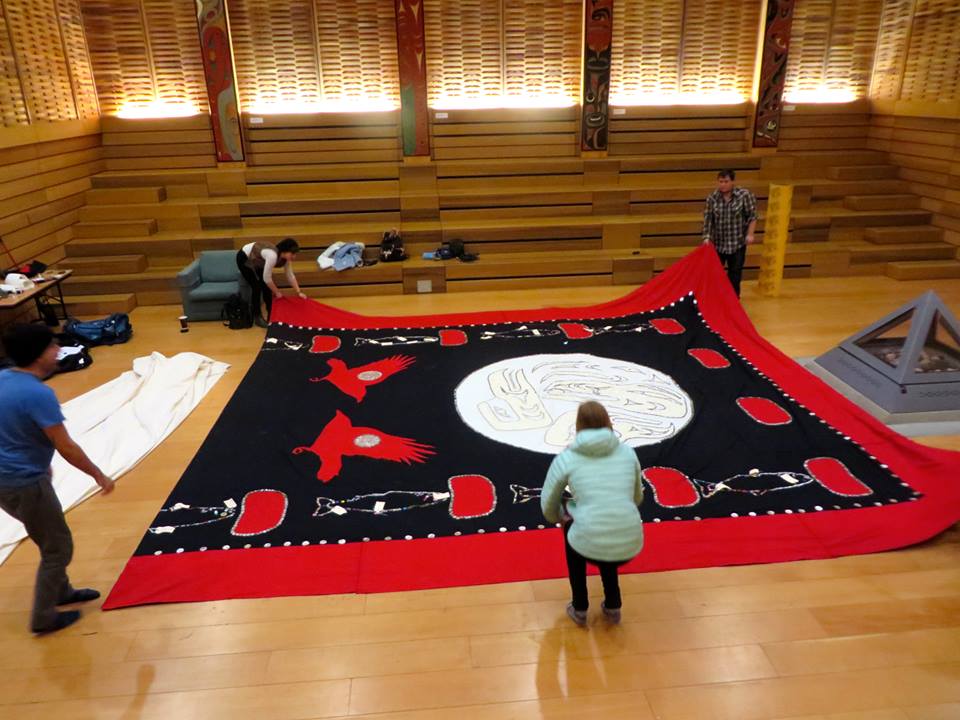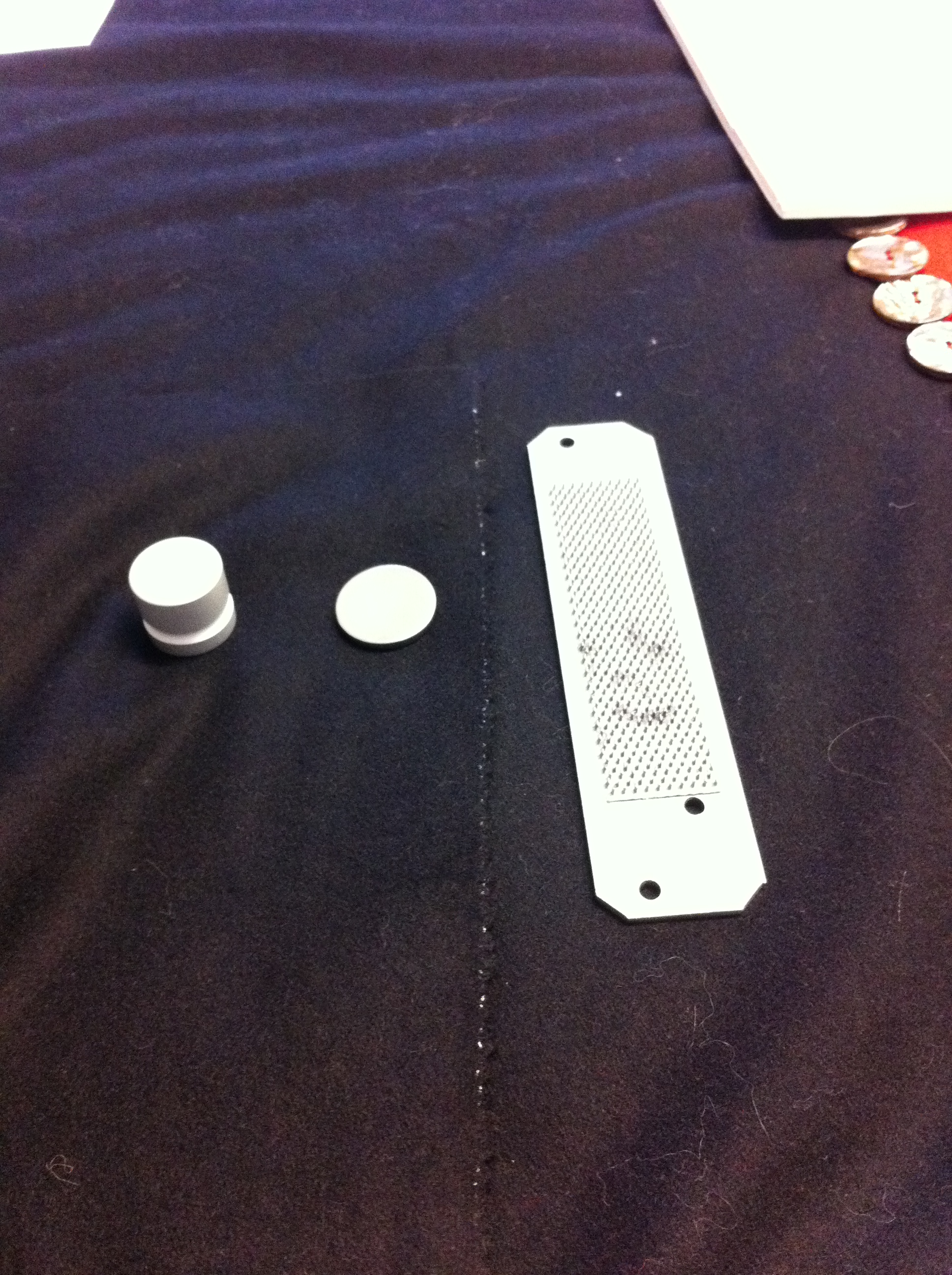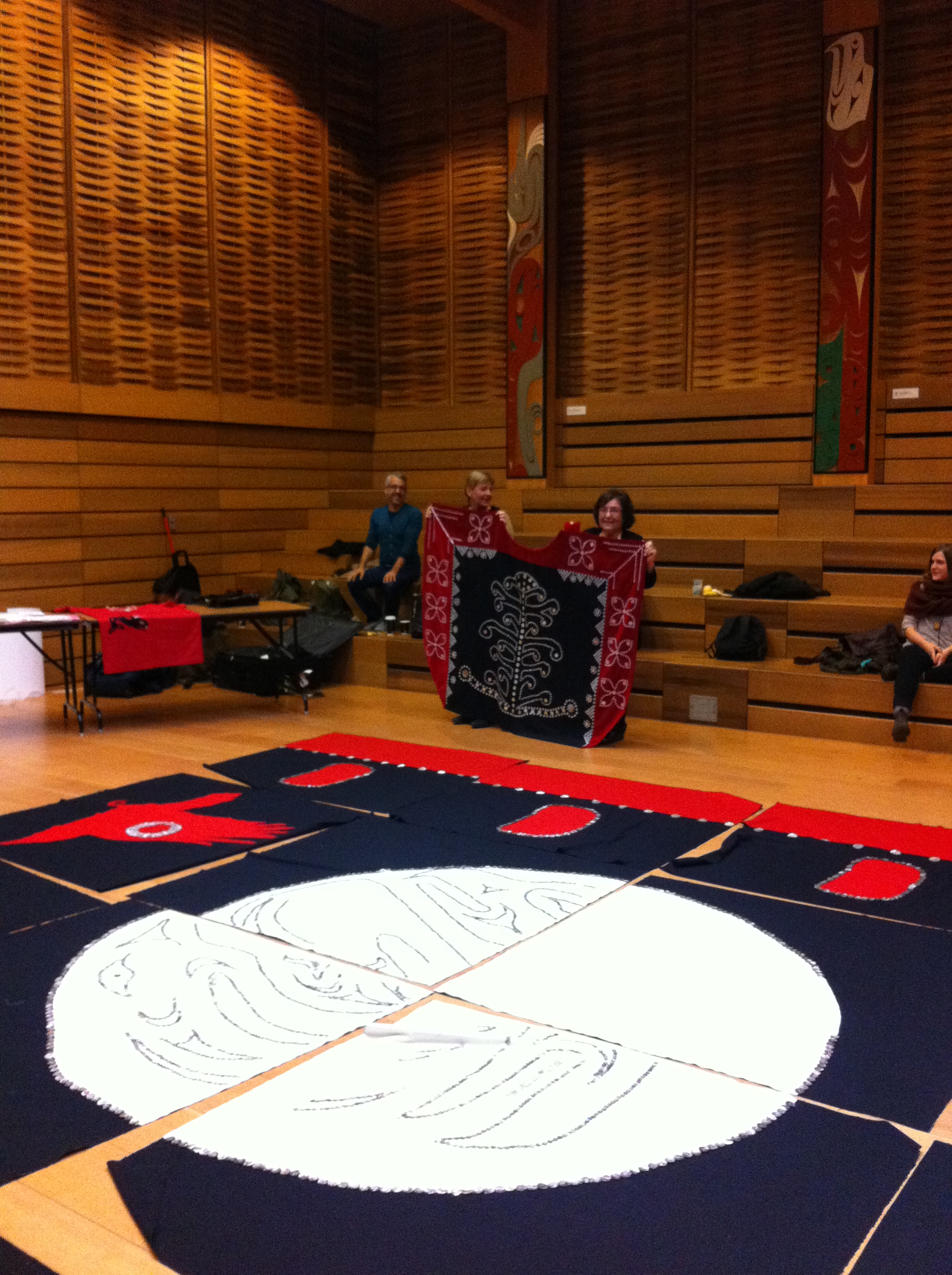The University of Victoria’s History in Art Graduate symposium is fast approaching. This year, the symposium will be held at the Legacy Art Gallery in conjunction with the Adasla exhibition. Peter Morin will be giving a keynote talk on the first night, Friday, Jan. 24 at 4:00 pm. If you are in the Victoria area and feel like joining, please do! The symposium is free to the public. See the poster below for more details:
And It’s Up!
Cleaning Up
Maxine Matilpi’s Visit
Today was the last day of class and we had the pleasure of being joined by button blanket maker, Maxine Matilpi. During her visit, Maxine told us that was introduced to blanket making after helping family members sort through buttons as part of the process of creating these works. Maxine talked at length about the importance of colour to her culturally and artistically. Speaking to the symbolism of colour with regards to blanket making, she suggested that the colour red references maternity and fire, while blue symbolizes the sky. Maxine noted that blue is a rare colour to find in button blankets, however, she often uses it in her own designs and considers it her signature colour. She brought a wide variety of blankets with her to share with us. What a great way to end the term! Here are a few of them (note the use of blue in the first):
Finished Product
John Powell’s Visit
Today, we were joined by artist and button blanket maker, John Powell. John has worked on a vast amount of blankets over the course of his career. We were lucky enough to view a number of these blankets during his visit. One of the most extraordinary blankets which John brought with him was made entirely of sequins. He explained that sequins became popular with blanket makers during the Potlatch Ban as sequins are light and silent, so they allowed people to more easily carry and use their blankets discretely. Although there is no longer a need for discretion with regards to the use of button blankets, sequins remain beautiful additions to such blankets and produce a stunning visual effect when incorporated into blanket details.
Loni Skelton’s Visit
Today, we were visited by fashion designer and button blanket maker, Loni Skelton. While in class, Loni shared with us how she came to design her unique blankets and fashion items. She stated that she is a self taught artist who learned by examining the work of some of the best artists within British Columbia. Loni’s approach to designing clothing is particularly interesting. Speaking to this approach, she suggests that as it is not possible or practical to wear a blanket at all times, she was inspired to find a different way of presenting her culture to the world in the form of fashion. As she explains, the various designs that she incorporates into her clothing often reflect the traditional oral stories told to her by her family, most notably her grandmother. One of the most beautiful pieces that Loni brought with her was a coat that included such a design around its collar. She expressed that when she wears this coat, she has the sense that her “culture [is] wrapped around her” and feels grounded in who she is as an aboriginal woman.
Meeting at the Legacy Gallery
It’s getting close to exhibition time! Today, we had a meeting at the Legacy Gallery to discuss how to display the blanket during the exhibition. We looked at a few tools that will be useful in keeping the blanket on the wall which, because of the blanket’s size, is quite the task. Here are a few that will likely come in handy:
Debra Bell’s Visit
Today, Debra Bell visited us in class. Debra told us of how she came to start producing button blankets after making and selling dolls during university. The sale of her work, particularly her button blankets, is something that Debra spoke at length about. She suggested that it is difficult to sell a button blanket as money cannot always compensate the button blanket maker for the full value of their work. This, as Debra explained, is due to the fact that button blankets are both labour intensive and emotionally intensive. She expressed that the time spent making a button blanket is often healing and reflective and described it has having “something spiritual” about it. Elaborating on this further, Debra told us that the process of making blankets has helped her through particularly difficult periods in her life. When the class was asked why they enjoy making button blankets, many of the responses reflected Debra’s sentiment that this activity is therapeutic and restorative.
Lucy Baron’s Visit
This week we were joined by Lucy Baron, who shared with us her experiences in button blanket making. Lucy discussed how she started creating blankets after learning how to “button” when she was fourteen years old. She explained that at this time, she aided others in making blankets by sewing buttons on for them. Eventually, Lucy started designing her own blankets, taking inspiration from the dogwood flower and the tree of life. In answering a question posed by Peter Morin, our resident artist consultant, regarding the process of learning to work with buttons, Lucy stated that it was frustrating at first. However, in time, she learned to enjoy it and now appreciates this process as it brought her into contact with an art form that she loves.
One of the most powerful stories which Lucy shared with us involved the role that button blankets played in the period leading up to the end of the Potlatch Ban in the 1950s. She spoke of how her grandmother had blankets that were kept in hiding and that these blankets sat “waiting” for the ban to be over so that they may once again be used freely. Lucy also told us of the rush to create new blankets within her community of Alert Bay once the impending end to the ban had been discovered. Stories such as these illustrate the importance that button blankets have had on both a personal and societal level.
Below is a photo from Lucy’s visit. Note the dogwood flower and tree of life design on Lucy’s blanket!
